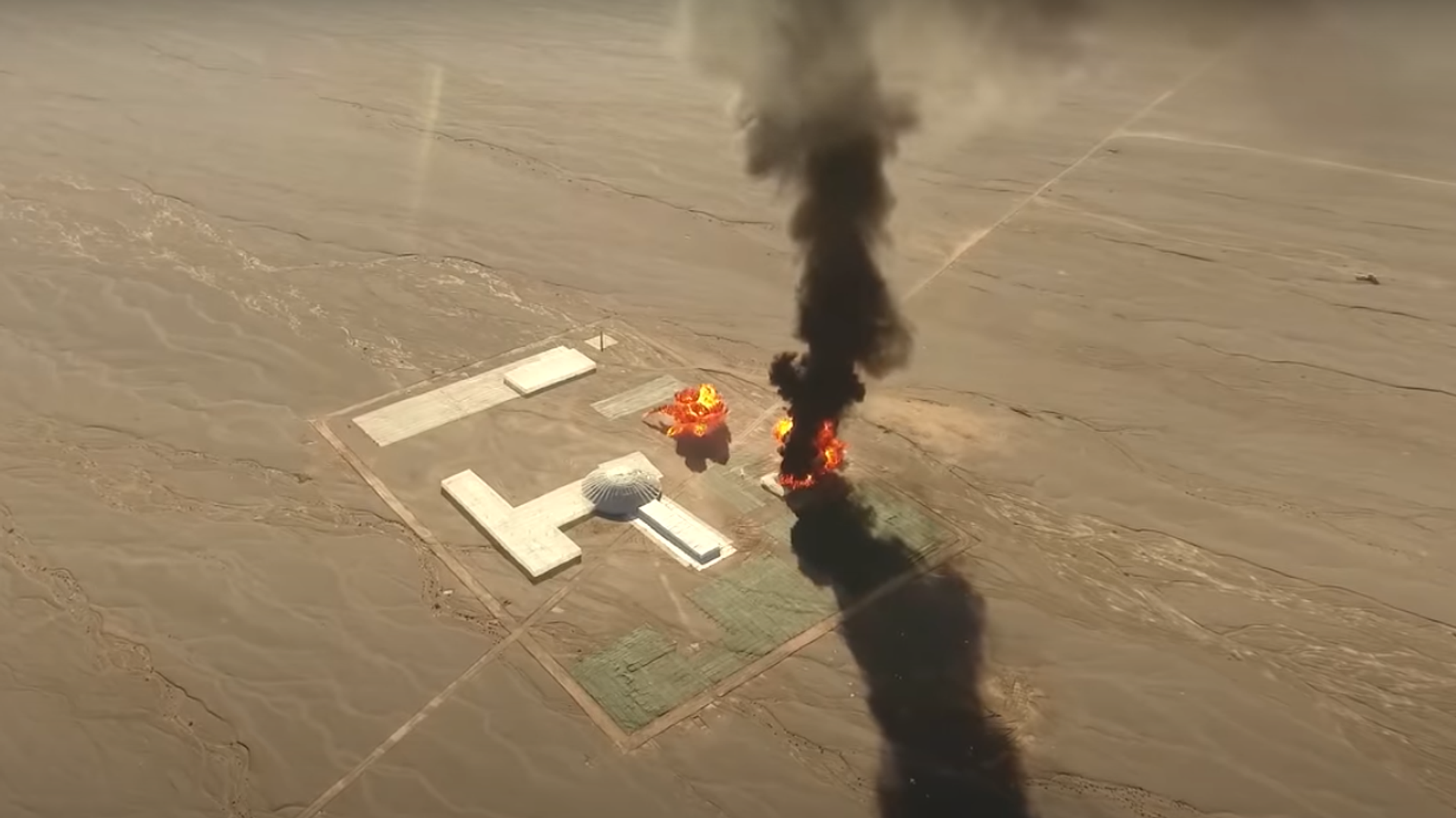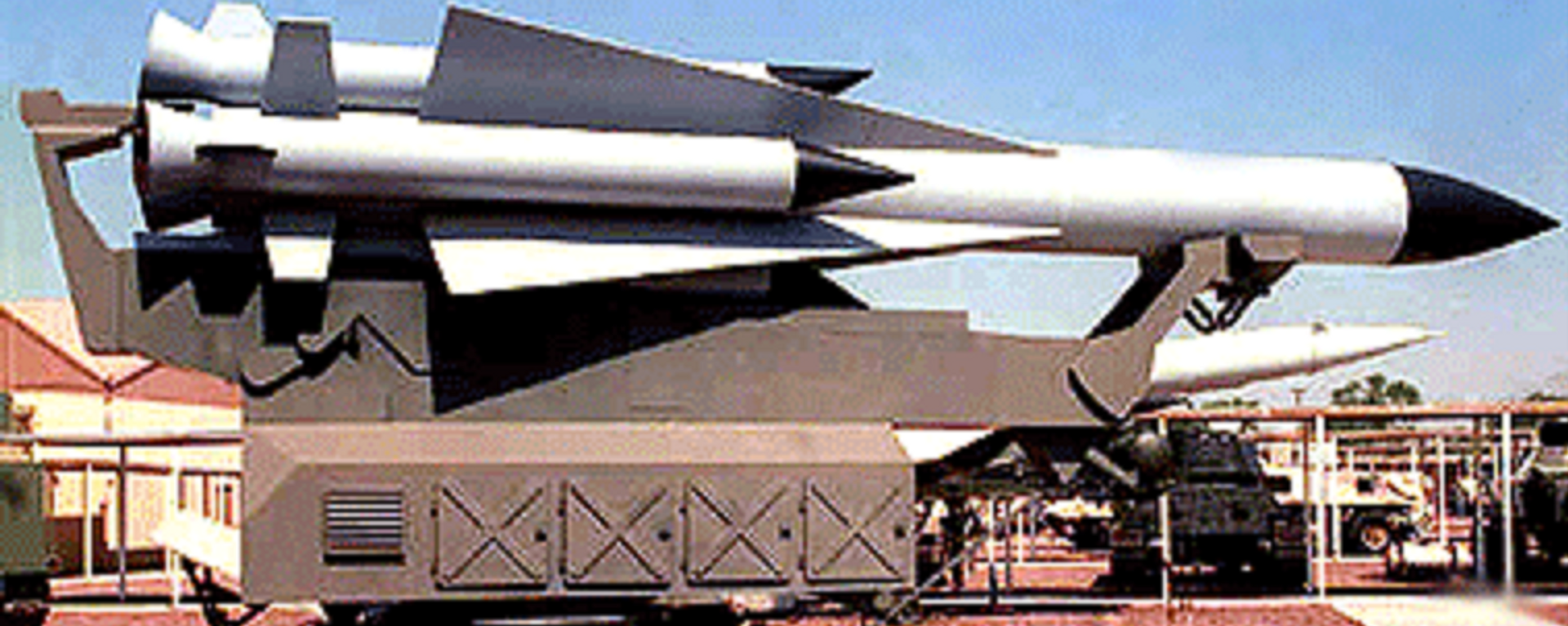https://sputnikglobe.com/20211226/clip-shows-iranian-missile-attack-on-target-that-looks-suspiciously-similar-to-israeli-nuclear-1091817000.html
Clip Shows Iranian Missile Attack on Target That Looks Suspiciously Similar to Israeli Nuclear Plant
Clip Shows Iranian Missile Attack on Target That Looks Suspiciously Similar to Israeli Nuclear Plant
Sputnik International
Situated in the heart of the Negev desert, The Shimon Peres Negev Nuclear Research Center is the suspected birthplace of Israel’s nuclear weapons. Tel Aviv... 26.12.2021, Sputnik International
2021-12-26T15:40+0000
2021-12-26T15:40+0000
2023-01-15T17:25+0000
iran
drills
dimona plant
israel
https://cdn1.img.sputnikglobe.com/img/07e5/0c/1a/1091816819_0:14:1235:708_1920x0_80_0_0_905e09d515df1a4639369d66a4fa4a9d.png
Iran has stoked “a dangerous escalation in rhetoric” with the release of a new video showing the destruction of a mock-up facility that looks suspiciously similar to the Dimona nuclear research center, The Jerusalem Post suggests.On Saturday, IMA Media, an Iran-based social media channel, released a video showing footage from the recently held Great Prophet 17 war games of an attack on a mock-up nuclear plant, spliced with a satellite picture of Dimona.Commenting on the video, JPost contributor Seth J. Frantzman called it “a new level of Iranian aggressive threats,” and claimed that IMA Media is linked to the Iranian government, since its video was republished by the semi-official Fars and Tasnim news agencies.Iranian officials and media have yet to comment on the matter, but did confirm Friday that the final phase of the Great Prophet 17 drills involved the simultaneous launch of 16 short and medium-range ballistic missiles, and the deployment of Shahed 136 suicide drones, which have an estimated range of up to 2,000 km, against an unspecified ground target.Pointing to Western media reports claiming that similar drones have been used against Saudi Arabia by Yemen’s Houthi militia, and to unverified Israeli allegations that Iran has exported its unmanned aerial vehicles to allies across the Middle East, Frantzman warned that the “use of small kamikaze long-range drones combined with ballistic missiles, as illustrated by the recent drill and videos, represents yet another combination of dangerous munitions.”Israel has repeatedly threatened to attack Iran in recent months amid reports of a continued deadlock between Tehran and Washington on the nuclear deal, with media reporting in October on the approval of a special $1.5 billion Israel Defence Force budget for a strike against the Islamic Republic’s nuclear facilities. Iranian officials have responded to these threats by suggesting that Tel Aviv should instead set aside “tens of thousands of billions of dollars” to repair that damage that would be caused “by Iran’s shocking response” to any aggression.The video isn’t the first time this year that Israeli media have expressed concerns about the consequences of a possible strike on Dimona.In April, the IDF launched an inquiry into why its air defences failed to intercept a rogue Syrian S-200 anti-aircraft missile which slipped into Israeli airspace and exploded in mid-air 40 km from the nuclear facility. The missile was launched as Syrian air defence troops fought to repel an Israeli missile attack near Damascus. Defence Minister Benny Gantz expressed surprise at the missile’s intrusion, saying that “normally we see different outcome.” The Pentagon, meanwhile, falsely claimed that the rocket was intercepted.Israel began the construction of the Dimona nuclear facility in the late 1950s with suspected French assistance, with the project proceeding outside the purview of the International Atomic Energy Agency’s regulatory and inspection regime. According to US intelligence, production of nuclear bombs at the facility began in the mid-1960s, and the country amassed up to 13 nukes by the time of the Six-Day War of June 1967. In 2007, a pair of Israeli journalists published a book suggesting that the USSR planned a secret operation to destroy Dimona during the war.Estimates on Israel’s present nuclear weapons stockpile vary wildly, from a low approximation of 80 warheads, to a high estimate of 400. The Jewish State neither confirms nor denies having nukes.Tel Aviv has spent decades accusing Iran of secretly working on nuclear weapons. Tehran has dismissed these allegations, with both of its supreme leaders expressing opposition to the development and stockpiling of any weapons of mass destruction. The Islamic Republic destroyed its chemical weapons arsenal in the mid-1990s, and did not use it during the brutal Iran-Iraq War of 1980-1988, even though Saddam Hussein’s forces repeatedly launched chemical warheads at Iranian troops and cities.
https://sputnikglobe.com/20210422/idf-investigating-why-its-cutting-edge-air-defences-failed-to-shoot-down-rogue-syrian-missile-1082701714.html
iran
israel
Sputnik International
feedback@sputniknews.com
+74956456601
MIA „Rossiya Segodnya“
2021
News
en_EN
Sputnik International
feedback@sputniknews.com
+74956456601
MIA „Rossiya Segodnya“
Sputnik International
feedback@sputniknews.com
+74956456601
MIA „Rossiya Segodnya“
iran, drills, dimona plant, israel
iran, drills, dimona plant, israel
Clip Shows Iranian Missile Attack on Target That Looks Suspiciously Similar to Israeli Nuclear Plant
15:40 GMT 26.12.2021 (Updated: 17:25 GMT 15.01.2023) Situated in the heart of the Negev desert, The Shimon Peres Negev Nuclear Research Center is the suspected birthplace of Israel’s nuclear weapons. Tel Aviv neither confirms nor denies having nukes, in a policy known as ‘deliberate ambiguity’, while threatening to unleash hellfire on any Middle Eastern nation it thinks may be pursuing such arms.
Iran has stoked “a dangerous escalation in rhetoric” with the release of a new video showing the destruction of a mock-up facility that looks suspiciously similar to the Dimona nuclear research center, The Jerusalem Post
suggests.
On Saturday, IMA Media, an Iran-based social media channel, released a video showing footage from the recently held Great Prophet 17 war games of an attack on a mock-up nuclear plant, spliced with a satellite picture of Dimona.
The video, entitled “Attack on the Zionist regime’s weapons of mass destruction center during TheGreatProphet17 war games,” shows the launch of countless suicide drones and missiles, with the drones slamming into the facility’s structures one by one before rockets turn it into a smoldering pile of rubble.
Commenting on the video, JPost contributor Seth J. Frantzman called it “a new level of Iranian aggressive threats,” and claimed that IMA Media is linked to the Iranian government, since its video was
republished by the semi-official Fars and Tasnim news agencies.
Iranian officials and media have yet to comment on the matter, but did confirm Friday that the final phase of the Great Prophet 17 drills involved the
simultaneous launch of 16 short and medium-range ballistic missiles, and the deployment of Shahed 136 suicide drones, which have an estimated range of up to 2,000 km, against an unspecified ground target.
Pointing to Western media reports
claiming that similar drones have been used against Saudi Arabia by Yemen’s Houthi militia, and to
unverified Israeli allegations that Iran has exported its unmanned aerial vehicles to allies across the Middle East, Frantzman warned that the “use of small kamikaze long-range drones combined with ballistic missiles, as illustrated by the recent drill and videos, represents yet another combination of dangerous munitions.”
Most concerning of all, the JPost contributor says, is the video’s implications for the Vienna nuclear talks, with the clip supposedly meant “to indicate that [Tehran] retains this military option alongside the talks, with no fears of consequences over its threats.”
Israel has repeatedly threatened to attack Iran in recent months amid reports of a continued deadlock between Tehran and Washington on the nuclear deal, with media reporting in October on the approval of a special
$1.5 billion Israel Defence Force budget for a strike against the Islamic Republic’s nuclear facilities. Iranian officials have responded to these threats by suggesting that Tel Aviv should instead set aside
“tens of thousands of billions of dollars” to repair that damage that would be caused “by Iran’s shocking response” to any aggression.
The video isn’t the first time this year that Israeli media have expressed concerns about the consequences of a possible strike on Dimona.
In April, the IDF launched an inquiry into why its air defences failed to intercept a rogue Syrian S-200 anti-aircraft missile which slipped into Israeli airspace and exploded in mid-air 40 km from the nuclear facility. The missile was launched as Syrian air defence troops fought to repel an Israeli missile attack near Damascus. Defence Minister Benny Gantz expressed surprise at the missile’s intrusion, saying that “normally we see different outcome.” The Pentagon, meanwhile, falsely claimed that the rocket was intercepted.
Israel began the construction of the Dimona nuclear facility in the late 1950s with suspected French assistance, with the project proceeding outside the purview of the International Atomic Energy Agency’s regulatory and inspection regime. According to US intelligence, production of nuclear bombs at the facility began in the mid-1960s, and the country amassed up to 13 nukes by the time of the Six-Day War of June 1967. In 2007, a pair of Israeli journalists published a book suggesting that the USSR
planned a secret operation to destroy Dimona during the war.
Estimates on Israel’s present nuclear weapons stockpile vary wildly, from a low approximation of 80 warheads, to a high estimate of 400. The Jewish State neither confirms nor denies having nukes.
Tel Aviv has spent decades accusing Iran of secretly working on nuclear weapons. Tehran has dismissed these allegations, with both of its supreme leaders expressing opposition to the development and stockpiling of any weapons of mass destruction. The Islamic Republic destroyed its chemical weapons arsenal in the mid-1990s, and did not use it during the brutal Iran-Iraq War of 1980-1988, even though Saddam Hussein’s forces repeatedly launched chemical warheads at Iranian troops and cities.


